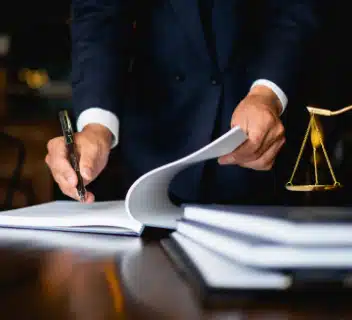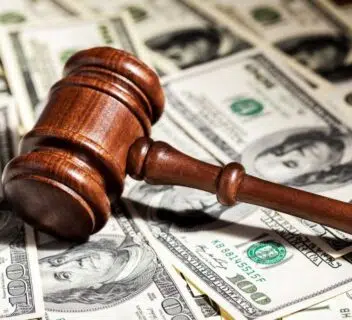What To Do After a Bike Accident
Bicycle accidents can be stressful situations, and the injuries may be severe making it difficult for you to remain calm and think clearly. Knowing what to do before a bicycle accident happens is the key to handling the accident correctly and ensuring fair compensation for your injuries and damaged property.
Many cities across the U.S. are starting to create bike lanes and cycling-friendly areas. While riding a bike is great exercise, it comes with risks – just like any other mode of transportation. If you are involved in a bike accident, your immediate actions may impact your recovery and future lawsuits. Here are some tips on what to do after a bike accident:
- Before assuming you are fine, take a few moments to slow down, catch your breath, and make sure you can feel all parts of your body. Many cyclists assume they are okay, and stand up, only to bend over again in pain. Take your time getting up, stretching, and assessing any damage before getting back on the seat and pedaling away. Some quick tests include walking back and forth a few times, moving your arms in all directions, and looking up, down, left, and right to evaluate whether you have any pain. If you do, call for help.
- If you feel nauseous, dizzy, or see any blood, don’t move around too much. Wait for medical assistance. A quick way to check on whether you hurt your head is to look at your helmet. If it is cracked or bent, consider a checkup with a medical professional as soon as possible since some injuries take a day or more to show up. Confusion or disorientation are signs of a concussion so if you don’t know where you are right away, there’s a chance you have one.
- Once you have checked yourself out and concluded you don’t have any serious injuries, check the condition of your bike. Wheels tend to take most of the beating in bike accidents, but make sure your tires are holding air, that the wheels are true, and that there aren’t any broken spokes sticking out. Test out the brakes in case they have jammed up.
- Next, look at the position of the brake levers and shifters. It’s usually easy to push them back into place, but riding away without checking may cause you more problems! Assess any damage or misplacement of the chain, and ensure the saddle is firmly attached to the seat post. Finally, inspect the frame for scratches and cracks that may have occurred due to your fall because even minor cracks can cause more damage as you pedal away.
- To minimize the injuries sustained with bike accidents, prepare a basic bike kit – especially if you are riding in remote areas, or for an extended period. It should include a multitool, chain link, spare tube, and mini-pump. A few basic first aid supplies are also recommended – bandages and wrappings, for example.
At the Scene of a Bicycle Accident
The best time to gather evidence is at the scene of the accident. Insurance companies need convincing evidence to get an idea of what happened. When gathering evidence, it is best to get as much information as possible and follow these helpful tips:
- Remain calm
- Check for injuries: keep in mind some injuries may not be apparent right away
- Call the police
- Gather information: insurance information, names of anyone involved in the accident, addresses, phone numbers, car details, license plate numbers, witness information, accident details
- Take photos: bicycle damage, car damage, accident layout
If your bike crashes into a car, or gets hit by a car, you should go through the steps of a vehicle-to-vehicle accident:
- Call the police so they can take an official report. Do not attempt to negotiate with the car driver or entertain the idea of accepting money they may offer to fix your bike. You may not know for several days whether you have actually sustained injuries that cause sprains, whiplash, or joint pain.
- Give the police an accurate account of what happened, get the contact information for any witnesses, and swap contact information with the driver. If your accident is serious enough, consider consulting with an attorney to understand what your options are for recovering damages for your property, as well as any medical expenses.
What to Do After a Bicycle Accident
The accident does not end at the scene, what you do after the bicycle accident is just as important as what you do at the scene.
- Seek medical attention
- Document the accident in detail
- Pick up your copy of the police report
- Get your bicycle inspected and repaired
- Note all expenses
- Notify your insurance company of the accident
- Speak with a lawyer
What to Do if Hit by a Car on Bike?
Being involved in an accident while on your bicycle can be a jarring experience. With cars weighing significantly more than bikes and moving at faster speeds, bike riders are at an increased risk for personal injuries when bicycle crashes with cars occur. Here’s a straightforward guide on what to do if you’re a bike rider hit by a car.
Stay Calm and Prioritize Safety:
- First and foremost, try to remain calm. It’s natural to feel a surge of emotions, but panicking can cloud your judgment.
- If possible, move out of the roadway to avoid any further danger.
Check for Personal Injuries:
- Before doing anything else, assess yourself for any injuries. Not all injuries show immediate symptoms, especially in the adrenaline-filled moments right after an accident.
Contact the Police:
- Always report the accident. They can help document the scene, which might be crucial if you decide to pursue any legal action later.
Gather Evidence and Information:
- This includes the driver’s contact and insurance information, details of the car (like make, model, and license plate number), and the contact information of any witnesses.
- If possible, take photos of your bike, the car, your injuries, and the accident scene.
Seek Medical Attention:
- Always see a doctor after a bicycle crash, even if you feel okay. Some personal injuries might not become apparent until later, and having medical records detailing your injuries can be essential.
Notify Your Insurance Company:
- Even though you were on a bike, some insurance policies might cover accident injury from car accidents.
Consult a Bike Accident Attorney:
- Navigating the legal landscape after being hit by a car can be complex. A bicycle accident law firm specializes in these types of cases and can provide guidance on the best steps to take next.
Remember, while biking offers many benefits, safety should always be a priority. If you ever find yourself involved in a bike accident with a car, know that there are resources and experts, like a bike accident attorney, ready to help you through every step of the process. Riding a bike should be an enjoyable experience, so always be cautious, stay safe, and know your rights.
Common Causes of Bicycle Accidents
Bicycle accidents are on the rise, making it important to be aware of actions that are common factors of bicycle accidents. According to the California Highway Patrol, these are the most common causes of bicycle accidents:
- Bicycle rider using the wrong side of the road
- Driver making unsafe left or right turn
- Bicyclist riding from driveway or sidewalk into path of car
- Driver opening door as bicycle passes
- Bicycle rider weaving, leaving edge of road or bike lane
- Bicyclist making unsafe left turn
- Bicycle without headlight or reflectors
Securing Justice After a Bicycle Accident: Why a Specialized Lawyer is Essential
If you’ve been injured in a bicycle car accident while riding, the aftermath can be both physically and emotionally overwhelming. In such traumatic times, it’s crucial to have someone by your side who understands the intricacies of such incidents. That’s where bicycle accident lawyers come into play. They have the expertise to ensure you receive the compensation you rightfully deserve. The potential compensation covers a range of needs, including expense reimbursement for medical treatments, repairs for any property damage, and benefits that assist in your rehabilitation process.
Often, bicycle accidents can occur due to reasons beyond the cyclist’s control – maybe a driver was on their cell phone, or perhaps they ran a red light. Regardless of the cause, the consequences for the cyclist can be severe. A specialized lawyer can assist in these complicated situations, navigating the legal maze on your behalf.
Worried about costs? With our network of lawyers, you won’t have to! If you’re unsure about the next steps or with queries about their specific situation, we offer a free consultation.
Don’t be left feeling alone and unsure of where to turn after such a distressing event. Remember, in the immediate aftermath, it’s essential to call 911 and ensure everyone’s safety. And once you’re ready, give us a call.
Our representatives are at your service 24 hours a day, 7 days a week, ready to assist and guide. Let our network of bicycle accident lawyers help put your life back on its rightful track.
SOURCES:
- California Highway Patrol. Bicycle Riding. Retrieved December 23, 2014.
- Washington Area Bicyclist Association. What to do after a crash. Retrieved December 23, 2014.
- Washington Area Bicyclist Association. What to do in the event of a crash. Retrieved December 23, 2014.




